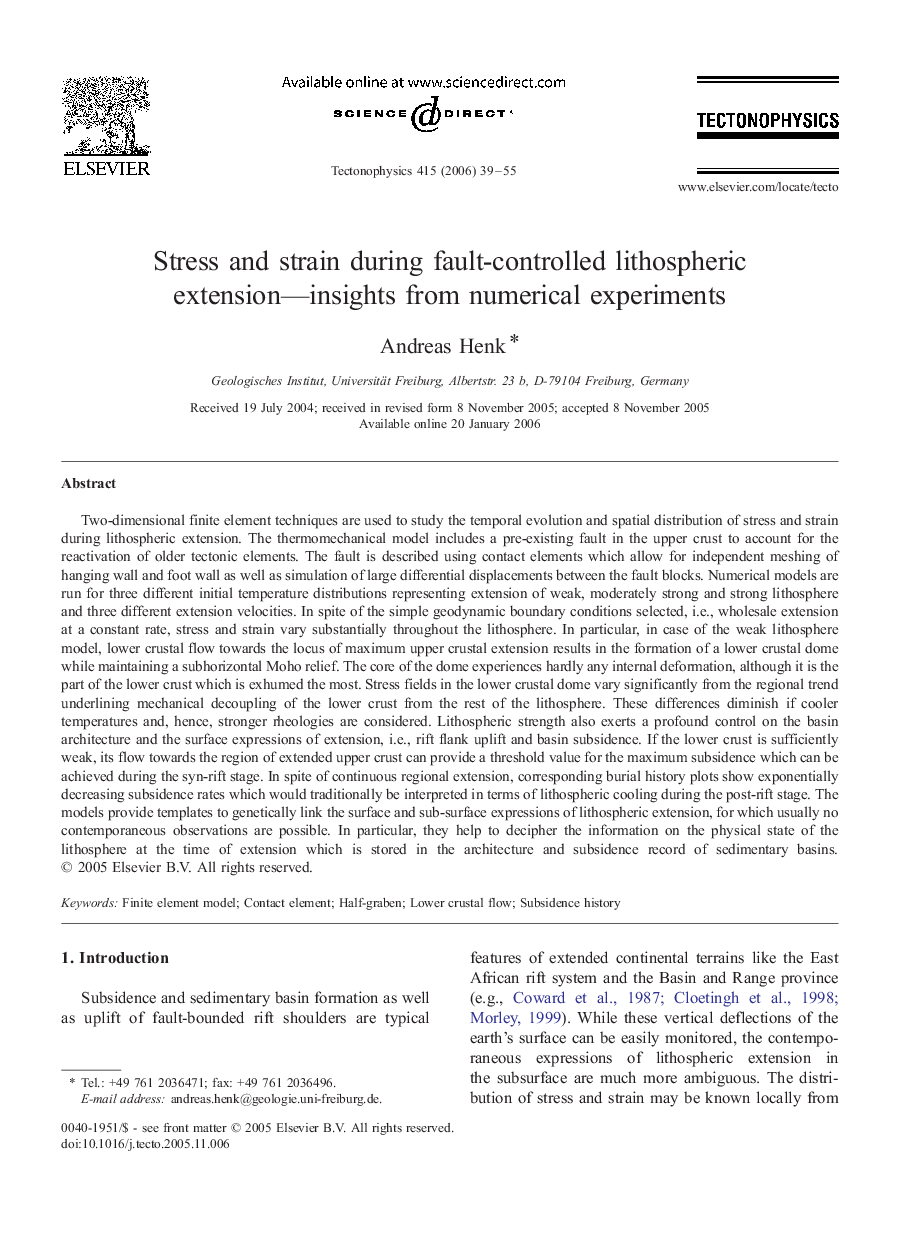| کد مقاله | کد نشریه | سال انتشار | مقاله انگلیسی | نسخه تمام متن |
|---|---|---|---|---|
| 4695243 | 1636961 | 2006 | 17 صفحه PDF | دانلود رایگان |
عنوان انگلیسی مقاله ISI
Stress and strain during fault-controlled lithospheric extension-insights from numerical experiments
دانلود مقاله + سفارش ترجمه
دانلود مقاله ISI انگلیسی
رایگان برای ایرانیان
کلمات کلیدی
موضوعات مرتبط
مهندسی و علوم پایه
علوم زمین و سیارات
فرآیندهای سطح زمین
پیش نمایش صفحه اول مقاله

چکیده انگلیسی
Two-dimensional finite element techniques are used to study the temporal evolution and spatial distribution of stress and strain during lithospheric extension. The thermomechanical model includes a pre-existing fault in the upper crust to account for the reactivation of older tectonic elements. The fault is described using contact elements which allow for independent meshing of hanging wall and foot wall as well as simulation of large differential displacements between the fault blocks. Numerical models are run for three different initial temperature distributions representing extension of weak, moderately strong and strong lithosphere and three different extension velocities. In spite of the simple geodynamic boundary conditions selected, i.e., wholesale extension at a constant rate, stress and strain vary substantially throughout the lithosphere. In particular, in case of the weak lithosphere model, lower crustal flow towards the locus of maximum upper crustal extension results in the formation of a lower crustal dome while maintaining a subhorizontal Moho relief. The core of the dome experiences hardly any internal deformation, although it is the part of the lower crust which is exhumed the most. Stress fields in the lower crustal dome vary significantly from the regional trend underlining mechanical decoupling of the lower crust from the rest of the lithosphere. These differences diminish if cooler temperatures and, hence, stronger rheologies are considered. Lithospheric strength also exerts a profound control on the basin architecture and the surface expressions of extension, i.e., rift flank uplift and basin subsidence. If the lower crust is sufficiently weak, its flow towards the region of extended upper crust can provide a threshold value for the maximum subsidence which can be achieved during the syn-rift stage. In spite of continuous regional extension, corresponding burial history plots show exponentially decreasing subsidence rates which would traditionally be interpreted in terms of lithospheric cooling during the post-rift stage. The models provide templates to genetically link the surface and sub-surface expressions of lithospheric extension, for which usually no contemporaneous observations are possible. In particular, they help to decipher the information on the physical state of the lithosphere at the time of extension which is stored in the architecture and subsidence record of sedimentary basins.
ناشر
Database: Elsevier - ScienceDirect (ساینس دایرکت)
Journal: Tectonophysics - Volume 415, Issues 1â4, 27 March 2006, Pages 39-55
Journal: Tectonophysics - Volume 415, Issues 1â4, 27 March 2006, Pages 39-55
نویسندگان
Andreas Henk,